Children who die from "living" water
Categories: Africa | Children | Ecology | Health and Medicine | Society | Water
By Pictolic https://pictolic.com/article/children-who-die-from-living-water.htmlA person can live without food for up to 8 weeks. Without water, the period allotted to him is reduced to three days. But what if there is water, but such that under a microscope it reveals so many infectious bacteria and other “dirt” incompatible with life, which makes one wonder why the sample has not yet corroded the flask?
(Total 14 photos)
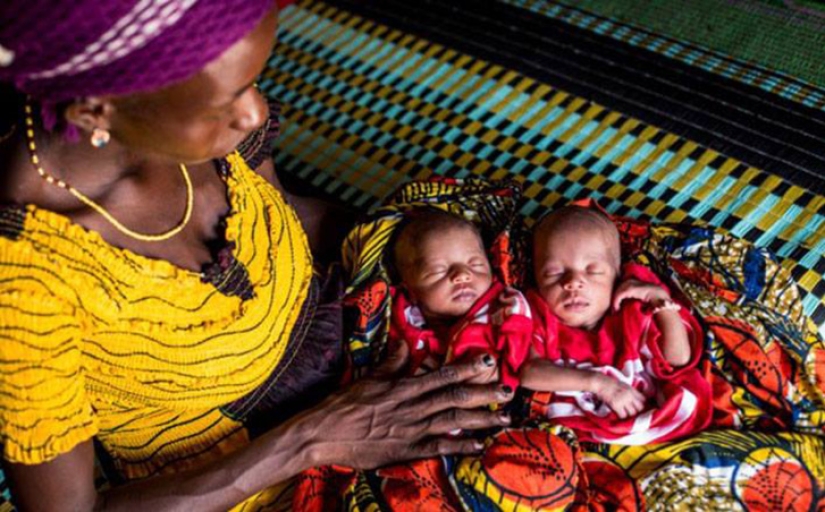
The problem of lack of drinking water in third world countries is a tragedy that can be equated with natural genocide. In Tanzania, Malawi, Ethiopia, Madagascar and a number of other countries, unsanitary conditions lead to water pollution, which later causes epidemics.
The hardest hit are women who have recently given birth and their children. Water Aid's Deliver Life project aims to provide newborn babies with safe drinking water. Until February 10, fundraising is held around the world. The foundation hopes to raise money to support 130,000 families by doubling every donation made to the organization by the UK government.
Any charitable campaign rests on people. Not only on volunteers who help raise money and supply families, but also on the stories of those who have already received help. Perhaps a few stories about the characters of Deliver Life will make you, if not make a donation to this particular fund, then simply do something good and useful.
Obstetrician Daniel. Tanzania
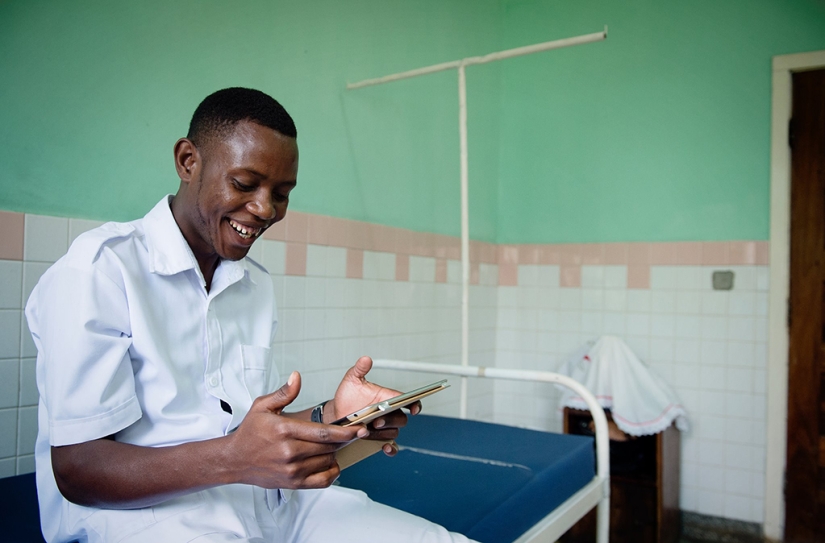
Daniel works at Kiomboi Hospital, where there is often not enough clean water not only to keep the premises and equipment at least minimally clean, but also simply to drink or wash the patients and their babies. The faucets in the rooms don't work. Every day, the obstetrician is faced with the seemingly absurd problem of leaving the hospital to fetch water, or continuing to care for patients who need constant monitoring.
“The worst thing is when I am alone on duty, and there are many patients. There are no taps, no water either - sometimes I can’t wash my hands, and this is a high risk of infection, ”Daniel admits.
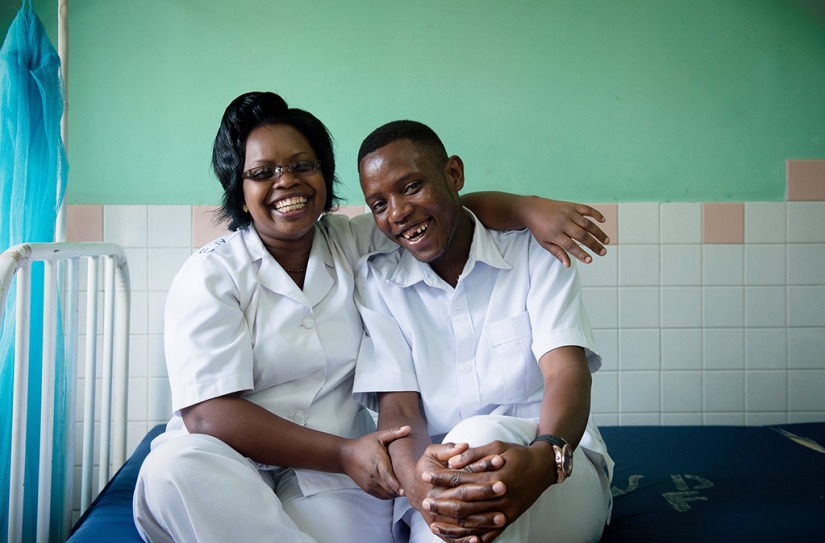
Daniel and his colleagues know that the most important thing is the sterility of linen and medical equipment. But more often than not, these conditions are completely unattainable.
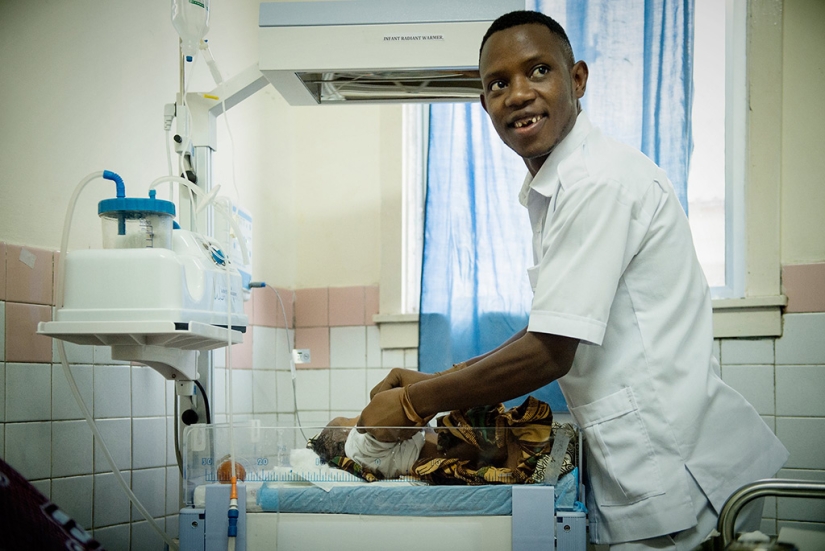
“When I first saw a baby dying of sepsis, I sobbed. I had to ask colleagues to tell his mother about it. It was my first shift."
Daniel's reason for becoming an obstetrician is simple: By helping pregnant and newborn women, he believes he is helping his entire nation.
Khadija is a mother who lost her son. Tanzania
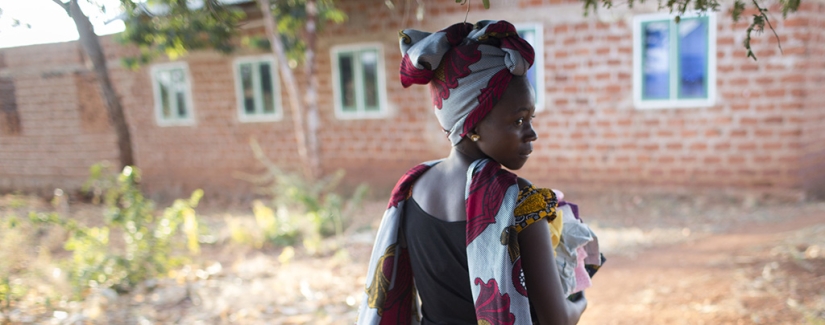
Khadija lives with her grandmother. For two, they share a small brick house in the Tanzanian village of Misnigiri. When Khadija got pregnant for the first time, she was incredibly happy and excited.
“We were on our way to the hospital and I told the bus driver that I was in labor. He brought me right to the door of the hospital, without stopping,” says Khadija.
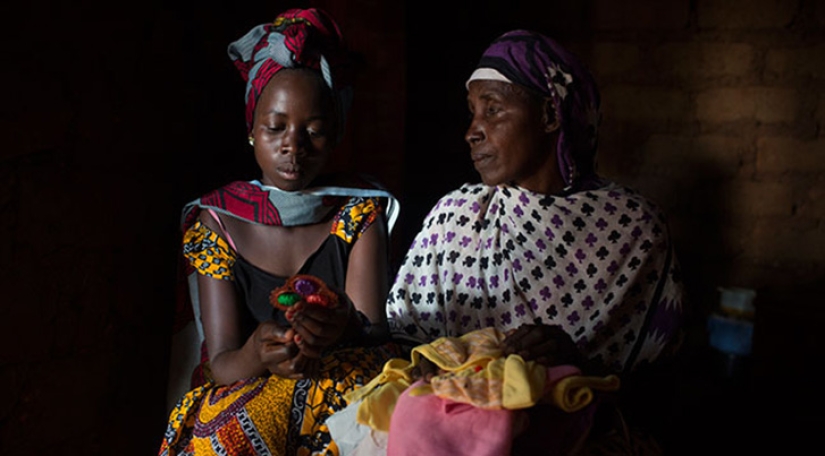
Grandmother Khadizhi had to find water herself to wash her newborn great-grandson and his mother. The only option was the local river.
“The water was dirty and smelled like cow urine. But I had no other option. When we got home everything was fine, but the next day my son had a fever and was crying all the time. During the night my Kefasi died of sepsis.”
Alinaf, who was afraid to take a shower. Malawi

Alinaf gave birth to her son Boyson at the Simulemba Health Center. The boy was born two weeks ahead of schedule and was a surprise not only for his mother, but also for his father Bernard.
“I came to the hospital to bring some personal items to Alinaf. And there he found his son! I was so happy,” says Bernard.
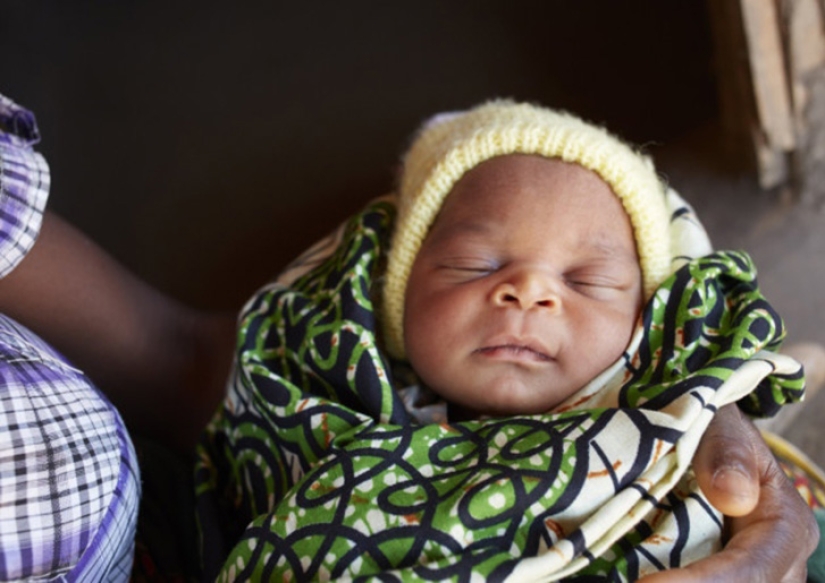
Obstetricians in Simulemba attend about 90 deliveries every month. And all this without clean water and in absolutely unsanitary conditions. “I was scared,” recalls Alinaf. “Many in the hospital were dying due to lack of hygiene.”
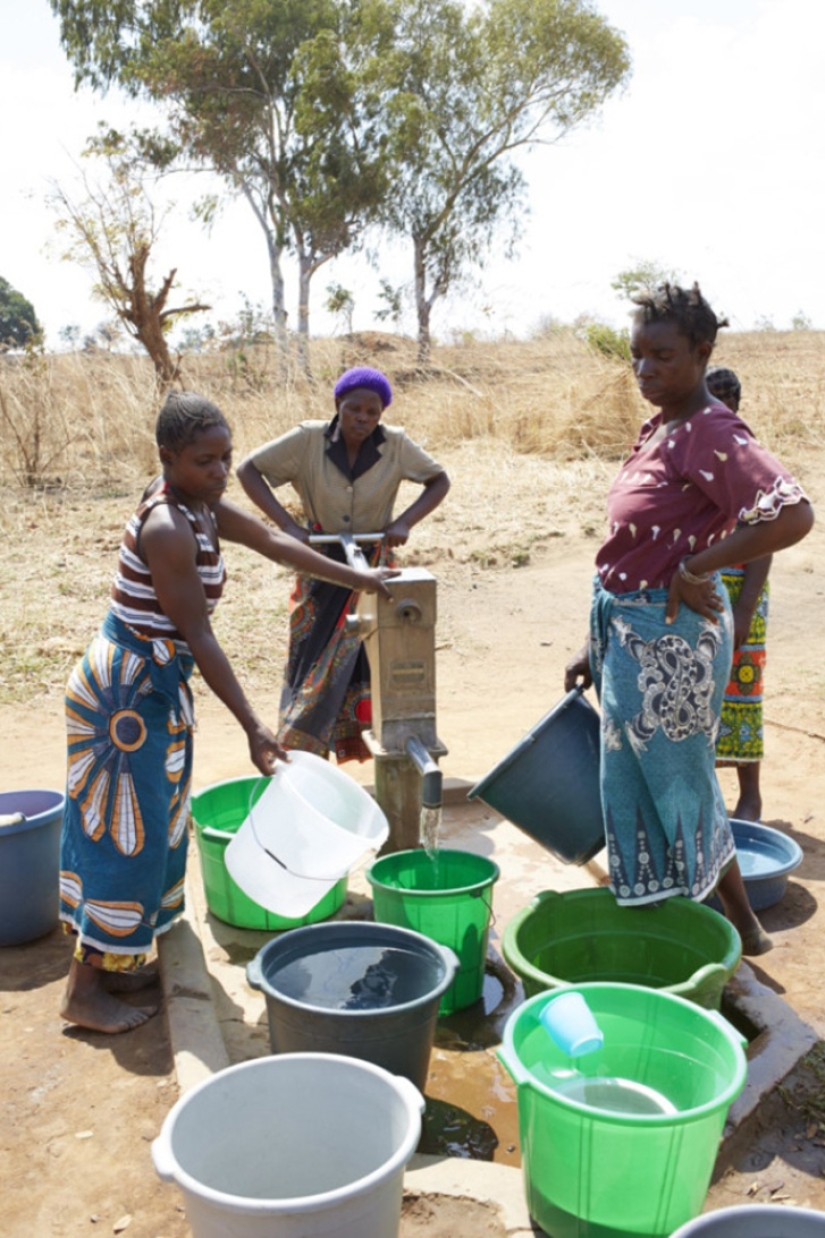
The shower at the Center where Alinaf underwent postnatal rehabilitation is four brick cabins without a roof. Instead of doors, there are curtains made from the clothes of the patients themselves. The ground, the walls, the water flowing from the faucet, everything is dirty. For some mothers, relatives bring water. They take it from a common source, in line for which they stand for hours. This is the only water tap for 2000 local residents.
Uchiya, who is eight months pregnant, carries 20 liters of water daily. Ethiopia
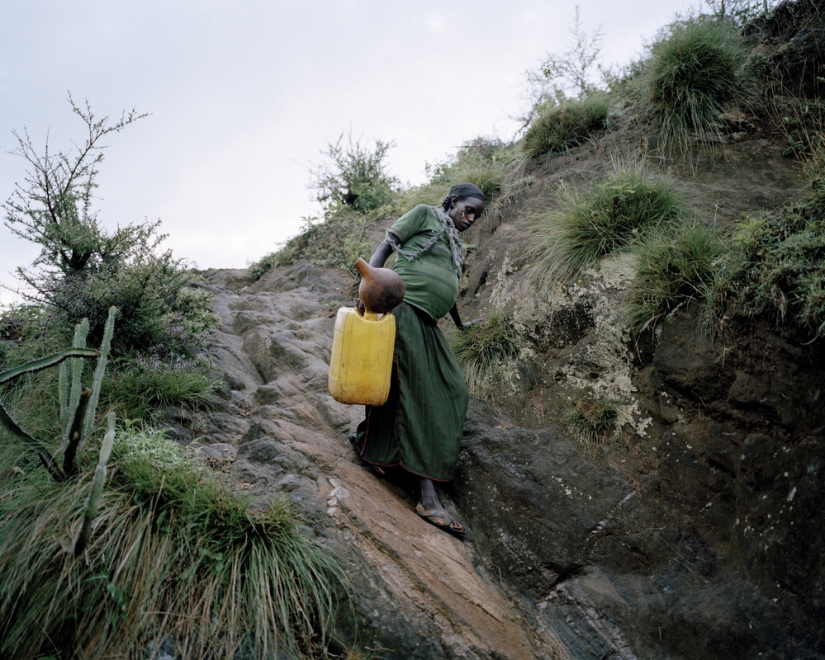
Uchiya is an incredibly strong woman. She is now in her eighth month of pregnancy and every day she has to travel several miles in completely impassable places. She goes to the local river to draw water, because the village has no other source. And even there the water is not safe, but Uchiya has no choice.
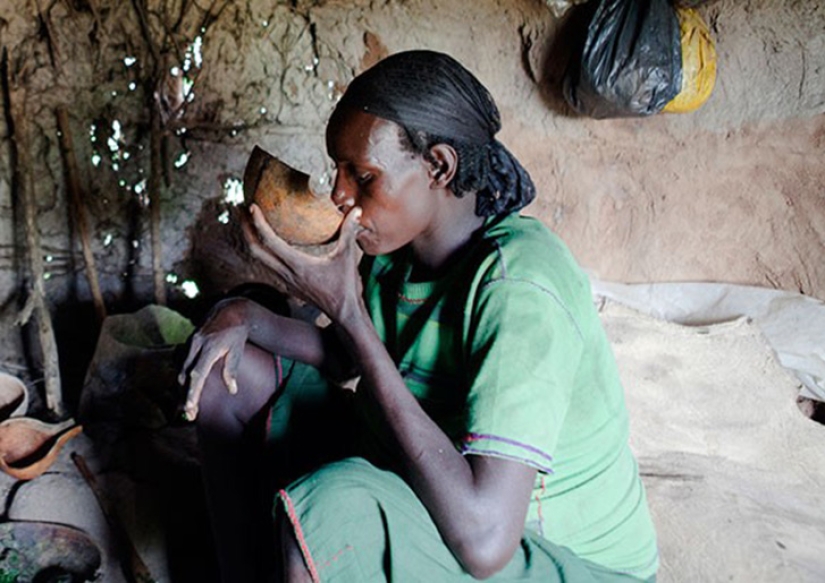
“You have to go through the mud, the road is very slippery. Now I walk slowly, but still sometimes I fall.” Every day, Uchiya walks home over the rocks, carrying a 20-liter canister of water on his back.
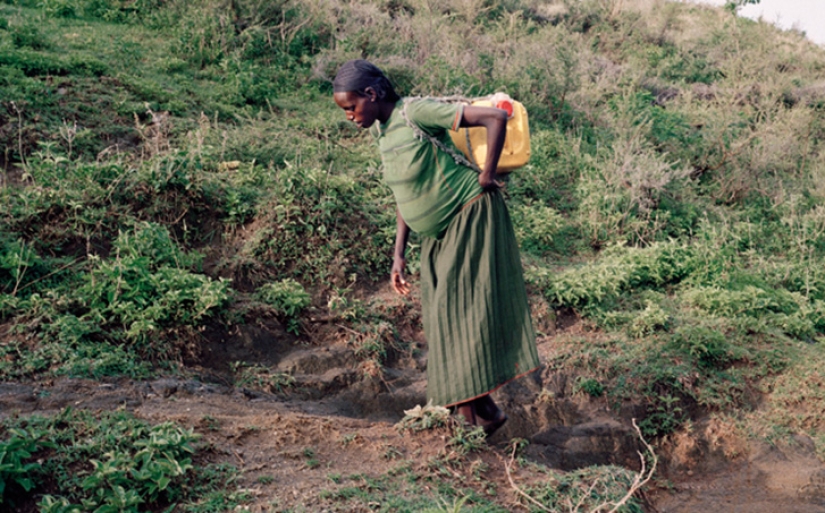
“Sometimes we fetch water at night and the water is full of leeches. Some people can drink with water, and then they stick to the throat or stomach. It’s very hard,” the woman says.
Marian, who gave birth while laying water pipes. Madagascar
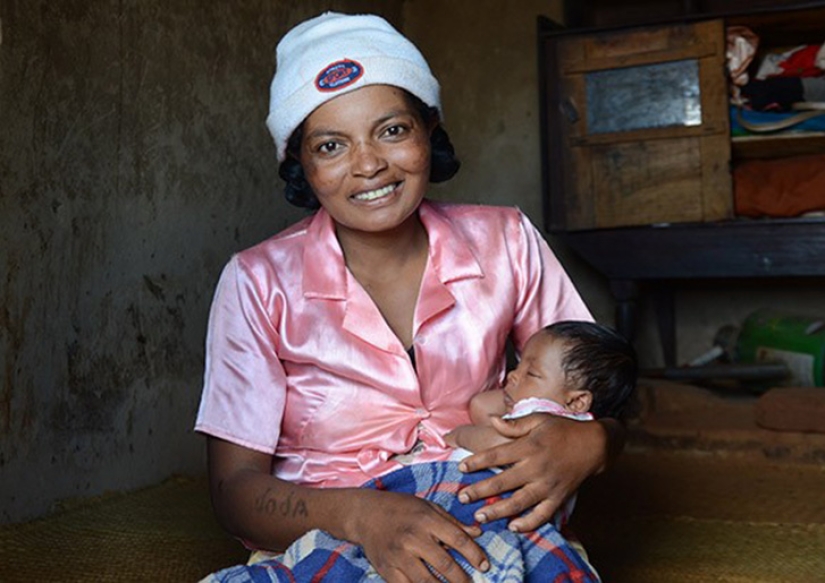
Marian gave birth to her first three children at home, in unsanitary conditions and without access to clean water. Angelo was born in a hospital where Marian helped install toilets and plumbing pipes.
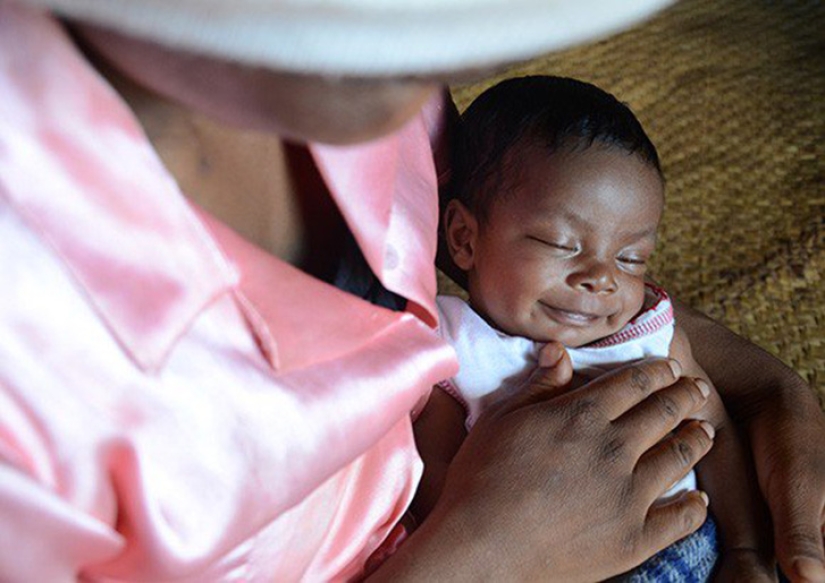
Angelo is now one year old. He looks and feels great, and Marian knows why: “He's lucky. Unlike older children, Angelo had access to clean drinking water. He is much healthier than them."
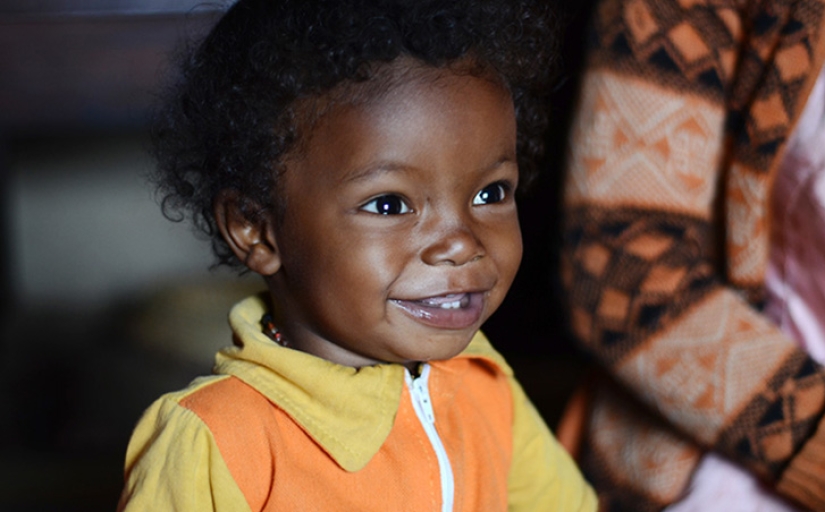
Today the situation is gradually improving: Water Aid collects money for the installation of water pipes, purification systems and sewers. However, in many countries water is still a luxury. What seems savage to us is a daily tragedy for these families. Maybe it's time to make up your mind? And the point is not only to help people suffering from a lack of clean fresh water today. Another goal is no less important - to do everything so that the tragedy of 37 countries does not become a tragedy for the whole world.
Keywords: Pregnancy | Malawi | Newborns | Tanzania | Ethiopia
Post News ArticleRecent articles

In Ancient Egypt, gods were revered, pharaohs were glorified, and majestic tombs were built. The builders of royal tombs were ...

Whether you are a tourist or a professional photographer, in both cases Lapland is a truly magical place. There is not only a very ...
Related articles

You would think that in today's world there is no place to wild customs? Sorry, you're wrong: the life of the pygmies of the Congo ...

During pregnancy, hormones hit the brain and the body begins to want something like that. And while some people are sympathetically ...

Spanish scientists said that apples with such imperfections as stains and areas of rot that are dangerous to humans. This also ...

Why should a coffin be a boring box if it can be ordered in the form of a lobster, fruit, bird or shoe? Residents of the African ...